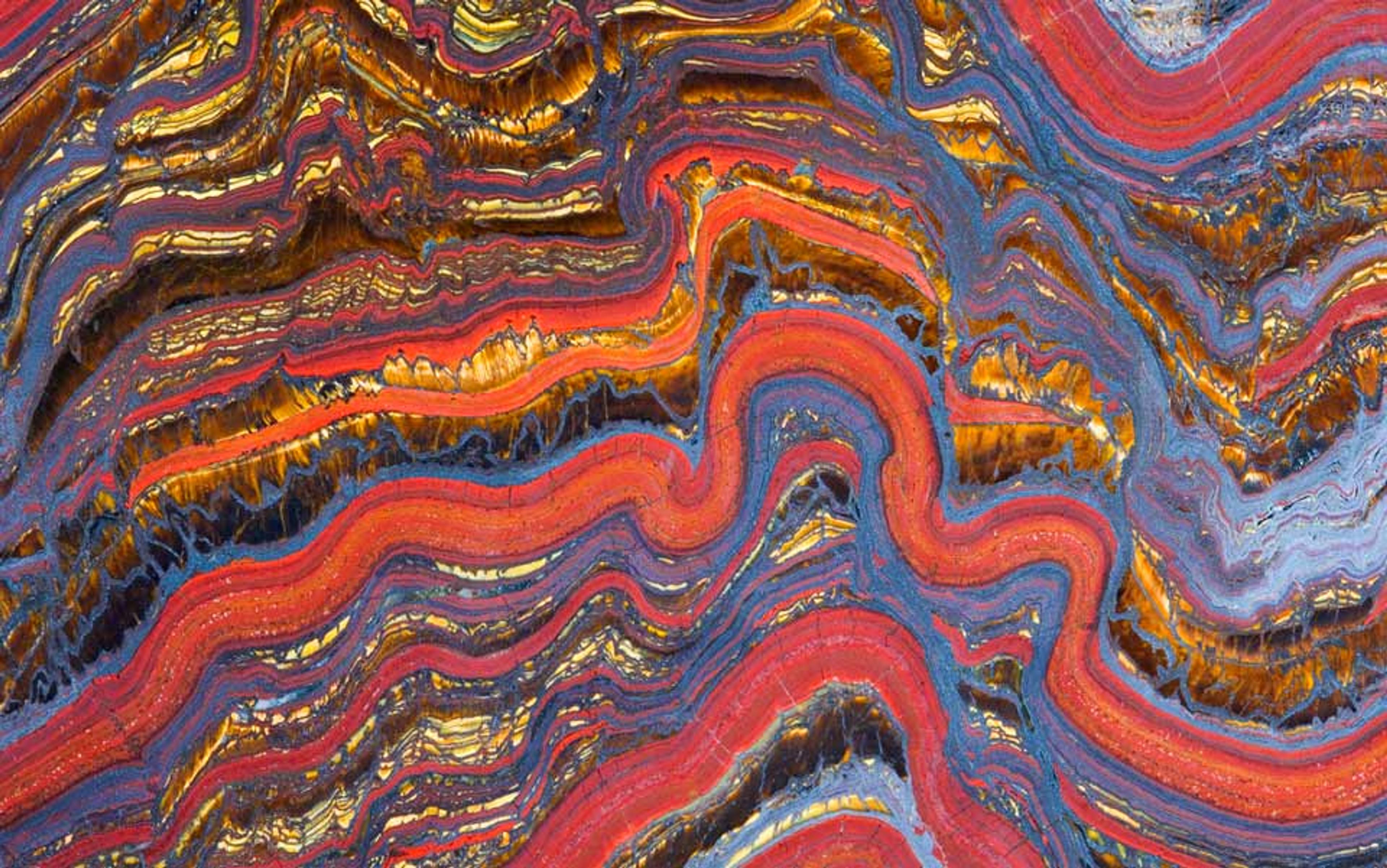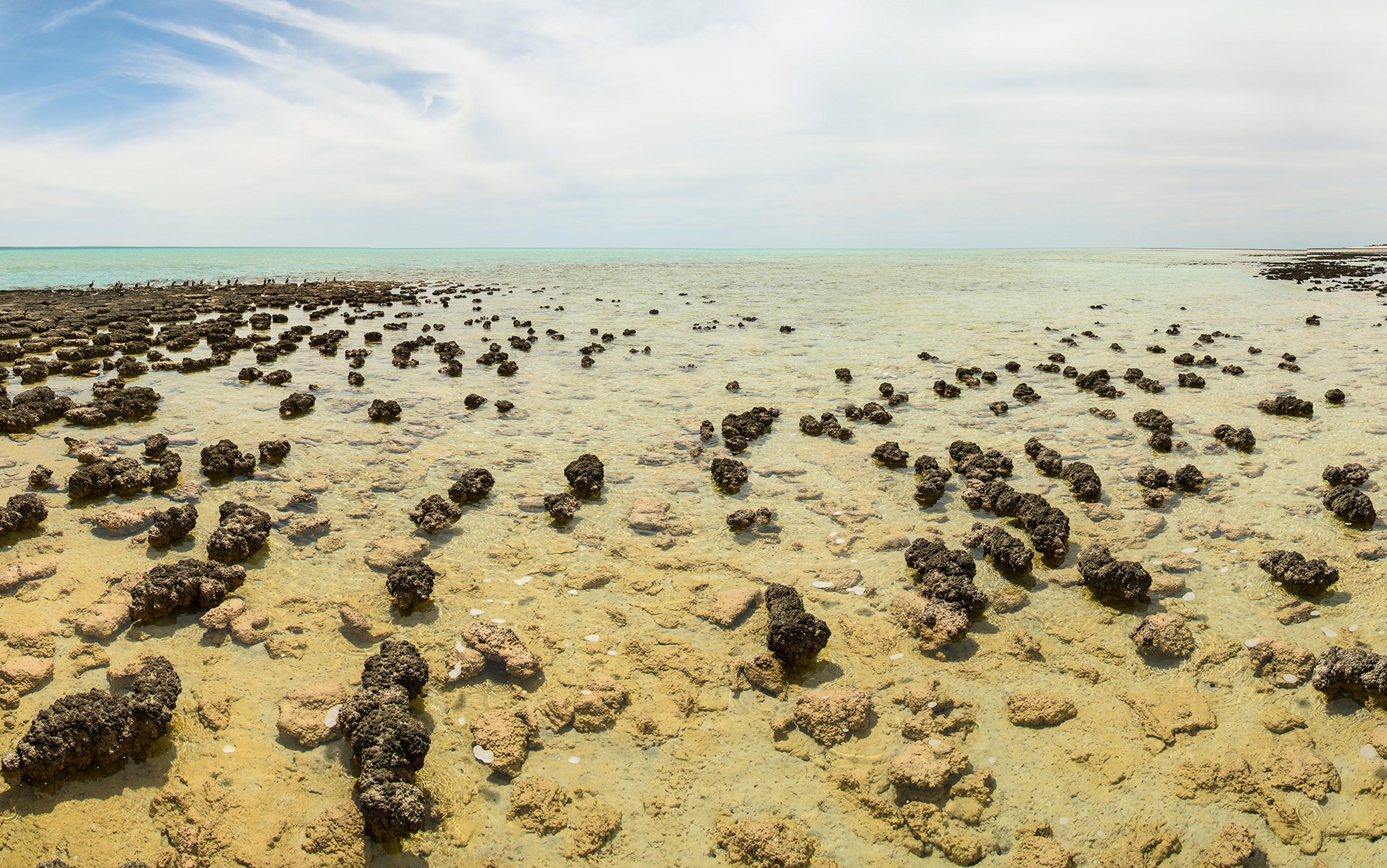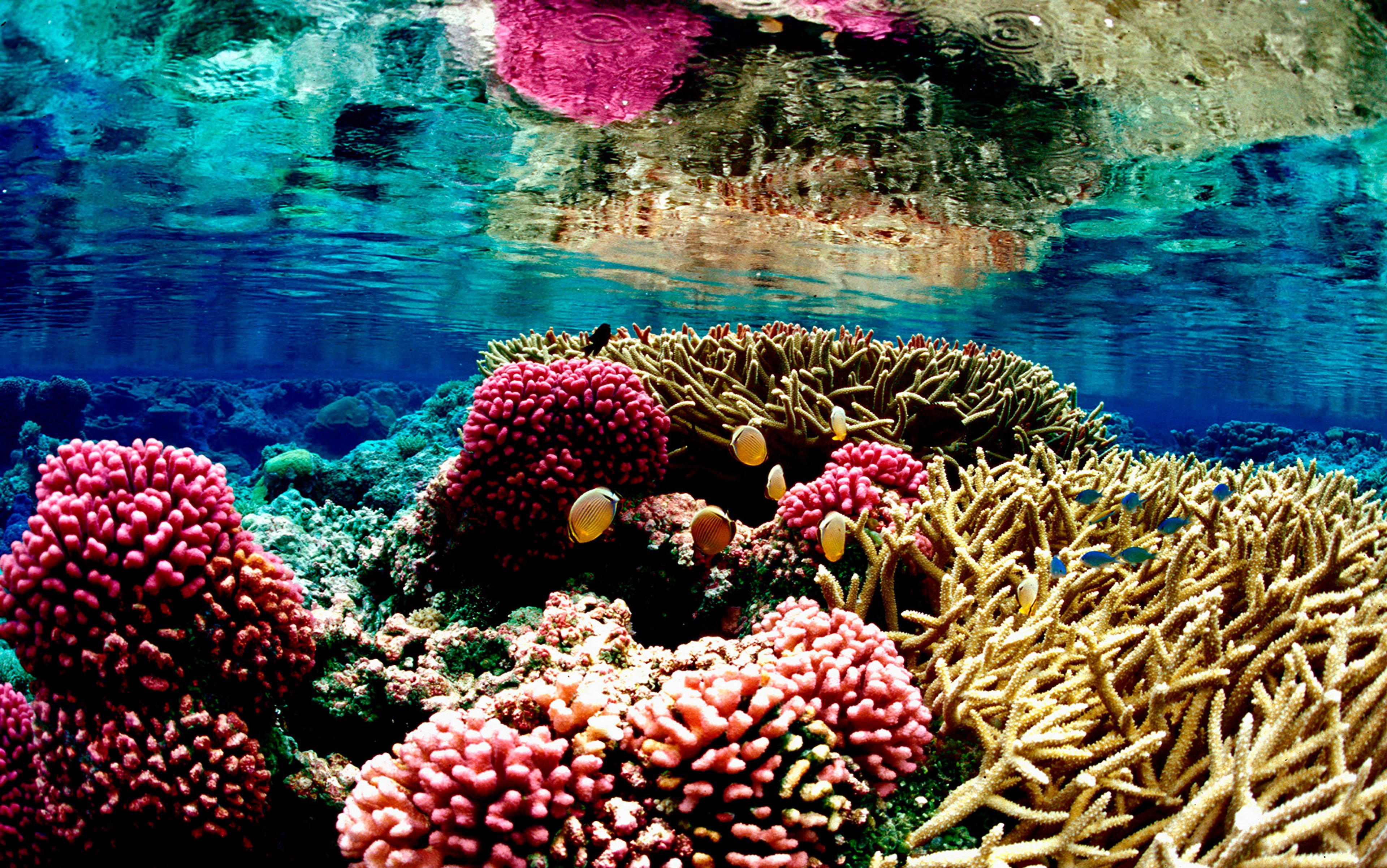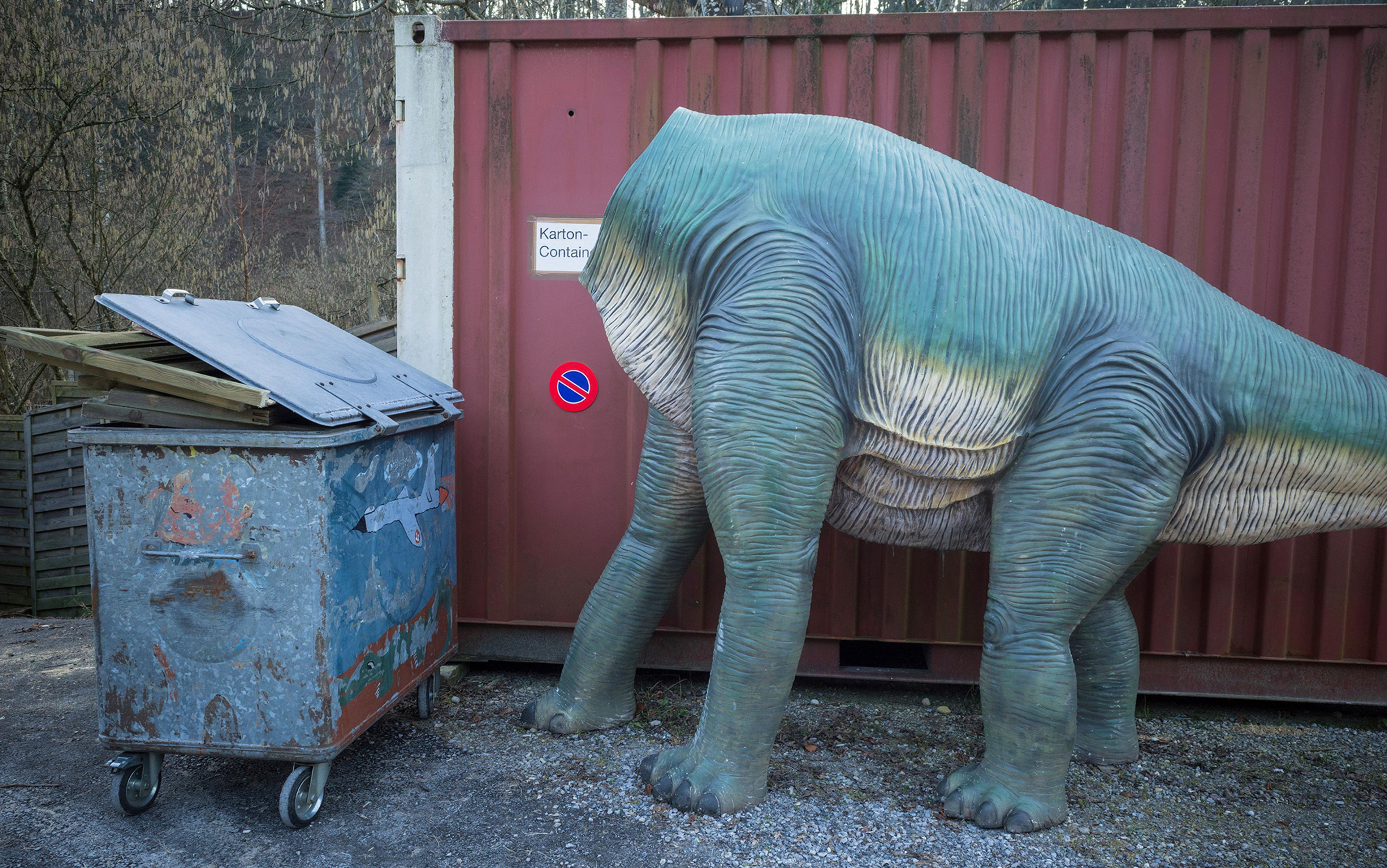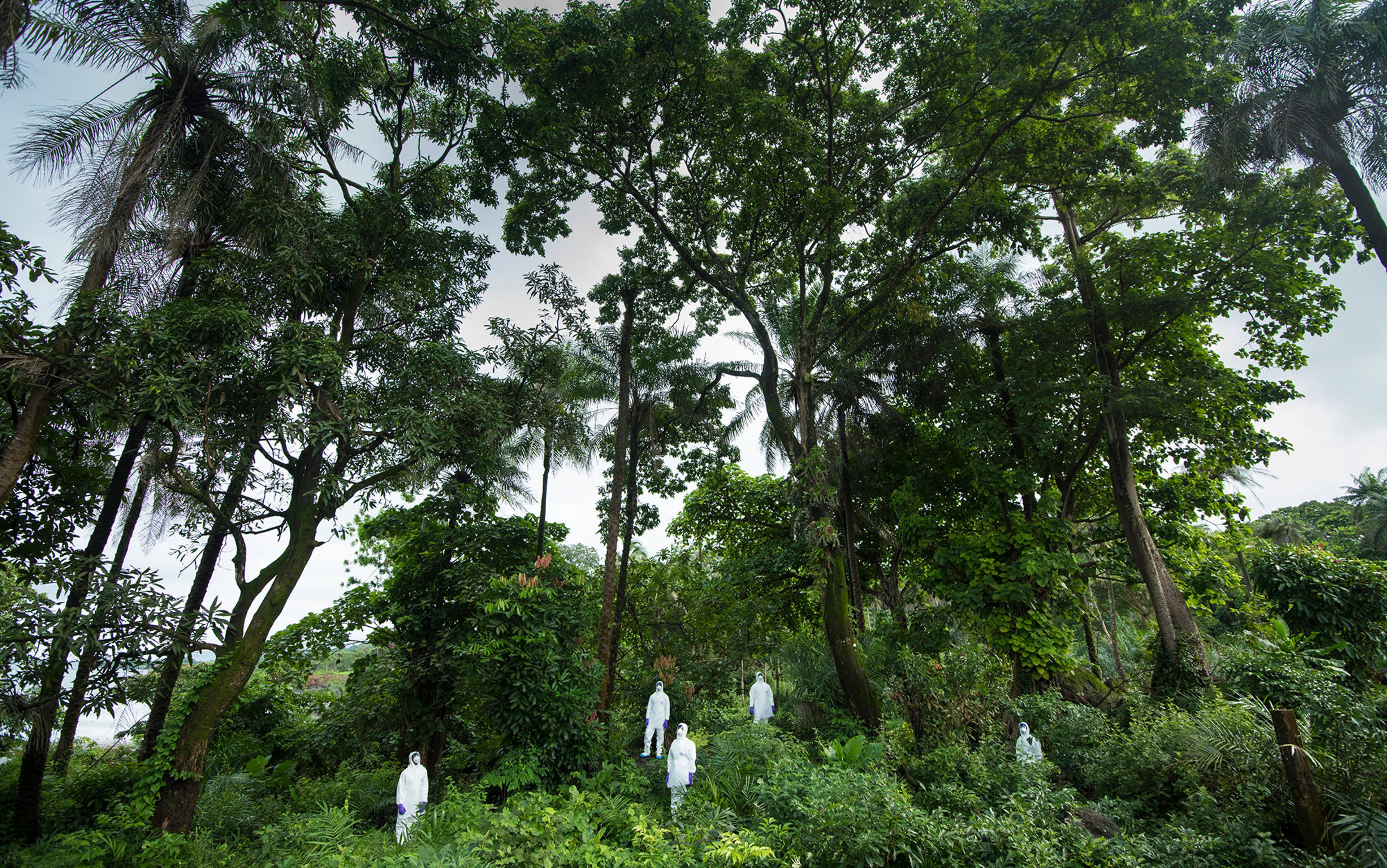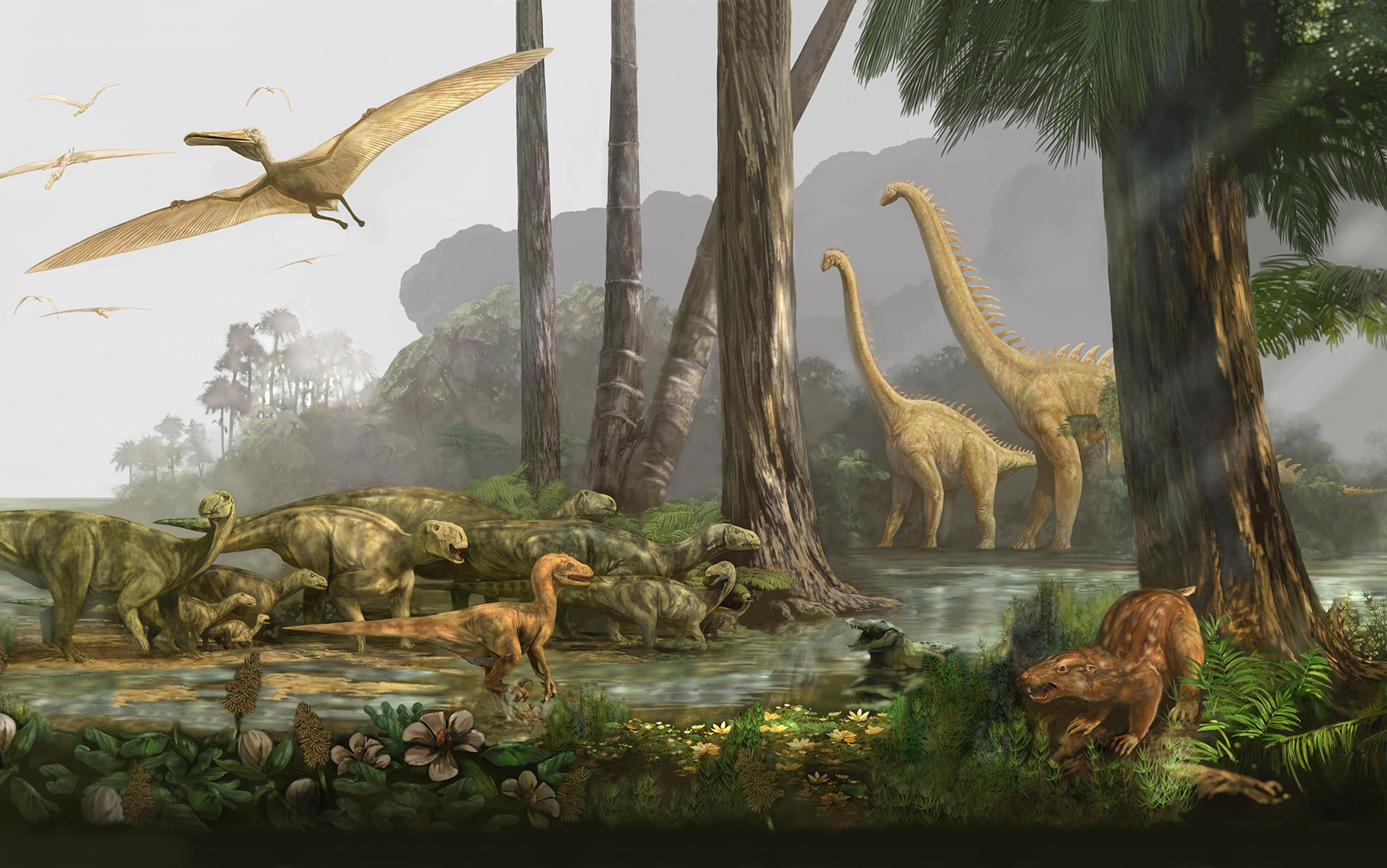One could easily be forgiven for thinking that life bears little connection to rocks. From high-school science curricula to Wikipedia, the institutional separation of geology and biology seems as ingrained today as when the 18th-century Swedish botanist Carl Linnaeus first distinguished animals, vegetables, and minerals. After all, what could be more different than a fragrant rose and a cold chunk of granite?
Minerals are usually defined as naturally occurring inorganic substances that combine to form rocks. Until recently, many geologists assumed that most rocks had been around since the origins of Earth, well before life formed on this planet. Even ‘biominerals’ such as calcite and apatite, which organisms secrete to form shells, teeth and bones, are merely recent examples of very ancient and rather common non-biological materials. No wonder, then, that when I asked my PhD adviser if I should take a biology course as a capstone to my graduate studies, his response was: ‘Why? You’re a mineralogist. You’ll never use biology!’
For more than 20 years, my career flourished in blissful ignorance of microbes and mollusks, teeth and bone. But my perceptions changed a bit in 1996, when I began to research the origins of life. Four decades earlier, the US chemists Stanley Miller and Harold Urey had performed their famous simulation of Earth’s earliest years by mixing water (ie, oceans), gases (the atmosphere) and little sparks (lightning) in order to generate the basic biological building blocks. Minerals weren’t part of the Miller-Urey experiment – their amino acids and sugars formed perfectly well without crystals cluttering up the reactions. But as the decades passed, the assembly of those building blocks into more lifelike macromolecules – such as proteins and DNA – proved difficult. And so theorists gradually brought minerals such as quartz-rich beach sand, shiny iron pyrite and fine-grained clay into the story. They said these minerals helped to select, concentrate and assemble small molecules into bigger molecules, while protecting the more delicate bio-bits from the ravages of Earth’s hostile early environment. Now, almost everyone in the field agrees that mineral variety is essential to biogenesis, which means life and rocks have been together since the very beginning.
Life is thought to have arisen in the Archaean aeon, some 4 billion years ago, when Earth was blanketed by a thick noxious atmosphere tinged orange with hydrocarbon smog. The seas and the land were both barren then, and the raw materials of life – water, air, rocks – were bathed in lethal ultraviolet radiation. The planet’s surface was marred by a steady stream of violent volcanic eruptions, asteroid bombardments and icy comet impacts. How could that alien, volcanic, comet-battered globe produce living molecules? The story is that minerals – quartz, pyrite, clays, and the like – must have provided the safe, shielded environments that spawned life. But for this theory to be true, those critical life-triggering minerals had to have been present when life first formed. Recent discoveries indicate that planetary mineralogy evolves, and that some minerals took a billion years or more to appear. How can we know that the crucial ones were around way back then?
Earth’s near-surface mineralogy has changed radically in both diversity and distribution during its 4.5 billion year history. And we now know what caused these radical changes: basic chemistry, physics and, most surprisingly, biology. We also know that these general principles apply to the trillions upon trillions of rocky planets and moons that exist throughout the cosmos. This new evolutionary perspective is detailed enough to let us travel back in time, to the formation of the first minerals in the universe. We know that no minerals could have formed right after the Big Bang, for the universe was much too hot, and there weren’t enough mineral-forming elements around. Almost nothing except the gaseous elements hydrogen and helium could have existed then. Nor did any minerals form inside the first stars, which were too hot to support solid crystals.
But when those first stars exploded a few million years after the universe’s birth, their expanding remains cooled, allowing carbon atoms within them to condense into diamonds, and a few other kinds of minute crystals, which are called the ‘ur-minerals’. Perhaps a dozen mineral species emerged, including graphite (a form of pure carbon that’s used as pencil ‘lead’), corundum (most familiar as ruby and sapphire in its coloured forms), and moissanite (a tough compound of silicon and carbon that’s often used as a cheap substitute for diamond gemstones). These ancient species of crystals still fall to Earth today in the form of microscopic interstellar dust, left over from the great nebula that formed the Sun and planets more than 4.5 billion years ago.
The driving question behind mineral evolution is how vast quantities of dust, composed of the original dozen ur-minerals, were processed and reworked to yield the thousands of different minerals on Earth today. All of Earth’s chemical richness – what we enjoy today as iPhones, skateboards, automobiles, flat-screen TVs, and countless other toys – was sequestered into those primordial dust grains, but in trace quantities. All but a dozen of the 80 or so chemical elements that make up planets were impossibly dilute, constituting only a few atoms in a million, or a billion, or even less. Barring some remarkably efficient concentration processes, the chances of those rare chemical elements clumping together to form separate, distinct mineral species were vanishingly small. To have the mineral diversity we enjoy today, the rocks that make up Earth needed to experience a number of interventions.
The inevitable conclusion – one that has shaken the mineralogical community to its core – is that most minerals arise as a result of biological processes
For Earth’s first half-billion years or so, life played no role in mineral evolution, for there were no living cells on its harsh and desolate surface. The earliest pulse of mineral novelty occurred before planets, when the primitive Sun began to flare, sending plumes of refining fire outward into the nebular disk of dust and gas spinning around it. The original 12 ur-minerals melted and remixed to generate 60 species, followed by another 100, which emerged when gravity clumped dust and gas into larger and larger planetesimals. Heat, pressure, and water transformed crystals into new forms, and collisions between rocks produced impact shocks that led to even more mineralogical novelty.
As Earth grew larger, dense iron-nickel metal sank through a mantle of rocks to form the planet’s core. Around this great bulk was an outer crust made primarily of black volcanic basalt. Having sorted itself into onion-like layers, Earth boasted a near-surface environment relatively concentrated in dozens of rare elements. Disproportionate amounts of the lightest mineral-forming elements hydrogen, lithium, beryllium and boron were peppered throughout this outer shell. Metal ores of copper, silver, zinc and gold; radioactive elements such as uranium, thorium and radium; key elements of life, including phosphorus, sulphur, nitrogen and carbon – all enjoyed unusual concentrations in Earth’s evolving crust.
Early Earth became an engine of mineral production, thanks to the water on its surface, the heat in its deeper layers, and the rock-recycling system of plate tectonics. These, and other physical and chemical processes, combined to form 1,500 different minerals. That’s a sizeable sum to be sure, but today we know of 5,000 different minerals species. What created the remaining 3,500 minerals, which comprise the vast majority of mineral species? The inevitable conclusion – one that has shaken the mineralogical community to its core – is that most minerals (two out of three, in fact) arise as a result of biological processes.
The co-evolutionary story between rocks and life began 4 billion years or so ago, when the planet had only rocks, air and oceans to work with. The origins researchers that followed Miller and Urey’s heady success soon realised that air and oceans aren’t enough to create life, no matter how lightning-filled the sky. Only with the addition of carefully selected minerals will simple, nonliving biomolecules concentrate and combine in complex biologically useful ways. The earliest microbes were ‘chemolithoautotrophs’ – a fancy name for cells that get their chemical energy from minerals, in order to make their own biomolecules from scratch. Microbes accelerated the breakdown of unstable minerals such as iron, sulphur or carbon, earning a tiny energetic boost in the process.
The rock-eating microbes transformed the Earth’s surface, but not nearly as much as the Great Oxidation Event (GOE), the single most dramatic event in Earth’s mineral evolution. Evidence from chemical and physical changes in Earth’s rocks places the beginning of the GOE at about 2.4 billion years ago. That’s when photosynthetic microorganisms that used the Sun for energy and manufactured oxygen as a by-product began to flourish along coastlines that were rich in eroded mineral nutrients. Oxygen is a dangerous, corrosive gas, which mounts a chemical attack that alters most rocks and minerals, transforming them into new ‘oxidised’ forms such as rust. More oxygen in the ancient atmosphere meant more erosion, leading to more nutrients, and even more oxygen-producing algae. This feedback loop has continued to play out in near-surface environments for more than 2 billion years, creating more and more mineral diversity.
Take copper, for instance. Before the GOE, it’s hard to identify more than about a score of likely copper-bearing minerals. But, today, more than 600 different copper minerals have been catalogued, including all the gorgeous blue and green ones such as azurite, malachite and turquoise. Hundreds of minerals combine copper, oxygen and other elements in ways that could not have happened before the evolution of photosynthesis. Life is likewise responsible for more than 90 per cent of the 200-plus known minerals of uranium, as well as the great majority of minerals of nickel, cobalt, molybdenum, lead, arsenic, carbon, sulphur and numerous other elements that readily react with oxygen. Only a living planet could display such mineralogical fecundity.
Life arose from minerals; then minerals arose from life. The geosphere and biosphere have become complexly intertwined, with numerous feedback loops driving myriad critical natural processes in ways that are only now coming into focus. Photosynthetic microbes created new pathways for making novel minerals of uranium and copper; now, those new uranium and copper minerals provide environments for specialised kinds of microbes, which in turn are instrumental in forming new ore deposits. The rise of atmospheric oxygen was accompanied by a decline in CO2, leading to a decrease in the ocean’s acidity, which fostered the formation of limestone reefs, which provided stable new environments for more photosynthesis. The oxygen produced by photosynthetic microbes also led to the formation of the ozone layer in the upper atmosphere, which blocked the Sun’s harmful ultraviolet radiation, allowing life to populate shallow coastal areas.
For more than 2 billion years, virtually every facet of Earth’s near-surface environment has displayed the intimate interplay of life and rocks. Indeed, geologists now vie with each other to produce the most novel twists in this epic love story between rocks and life. It has even been suggested that plate tectonics – the grandest of global-scale phenomena, by which continents shift while earthquakes and volcanoes alter the landscape – could be influenced by life. Microbial weathering greatly enhances clay mineral production, and enhanced production of slippery clays has ‘lubricated’ down-going plates of rock and accelerated tectonic events – at least, that’s how the story goes. A lot of geologists think that idea is wacky. After all, plate tectonics and non-microbial clay production have been around for billions of years. But such hypotheses reveal the extent to which the new co-evolutionary mindset is shaping the thinking of today’s geoscientists.
Earth has transformed many times, from a black and blasted land of volcanoes, to a blue water world, to an oxygen-rich globe with rusty red continents. Yet no transition was more dramatic than the greening of the planet, and the rise of the terrestrial biosphere, which began about 650 million years ago, when a global glaciation came to an end and explosive growths of photosynthetic algae boosted atmospheric oxygen from perhaps 1 per cent to near-modern levels of 20 per cent. More oxygen meant a reinforced ozone layer, which shielded the barren continents from those burning ultraviolet rays, making it safe for life to migrate onto dry land.
The first land plants had tiny roots, commensurate with the shallow soil of their homes. But those diminutive roots accelerated the breakdown of rock, creating deeper soils that taller plants could then colonise, with longer and more intrusive roots. In a span of only about 40 million years, vegetation on land evolved into 50-foot tall plants and giant, treelike fungi, all rooted in soils that ran 20 foot deep. Those plants would go on to seed clouds, increasing rainfall and altering erosion patterns, providing still more niches for plants. They also created a robust and vital base for a food web that quickly expanded to include insects, amphibians, dinosaurs, and eventually, us.
Saving ourselves will require a deeper understanding of the strange, twisty relationship between rocks and life
Earth’s ongoing mineral evolution reveals anew the uniqueness of our planetary home among the planets of the solar system. Tiny Sun-baked Mercury and our bone-dry Moon have relatively restricted mineralogy, comprised of fewer than 300 mineral species. Warm and wet Mars progressed only a little farther along the pathway of mineral diversification – certainly no more than a few hundred different mineral species. Earth’s unique inventory of 5,000 mineral species is a testament to the rich possibilities that arise when the geosphere and biosphere co-evolve.
As we look back on Earth’s storied 4.5 billion-year history, it’s natural to wonder if we are living in a new era in this co-evolutionary saga. Our modern age is characterised by wildly accelerated feedbacks between life and rocks, with a special emphasis on a single organism: Homo sapiens. During the past 10,000 years, humans have begun to alter many of Earth’s near-surface geochemical cycles – with open-pit and strip mining, agriculture and the use of fertilisers, the levelling of forests and the construction of cities and roads, the armouring of shorelines, the damming of rivers, the production of myriad new chemicals, and the ever-accelerating burning of fossil fuels.
These shifts within the Earth system are radical, even when set against geological time scales spanning millions of years. And while we won’t be able to anticipate their consequences for some time, we had better try. After all, the Earth will continue to evolve as a dynamic living world whether or not our species survives. But saving ourselves will require a deeper understanding of the strange, twisty relationship between rocks and life, a relationship that sustains the only home we have ever known.
